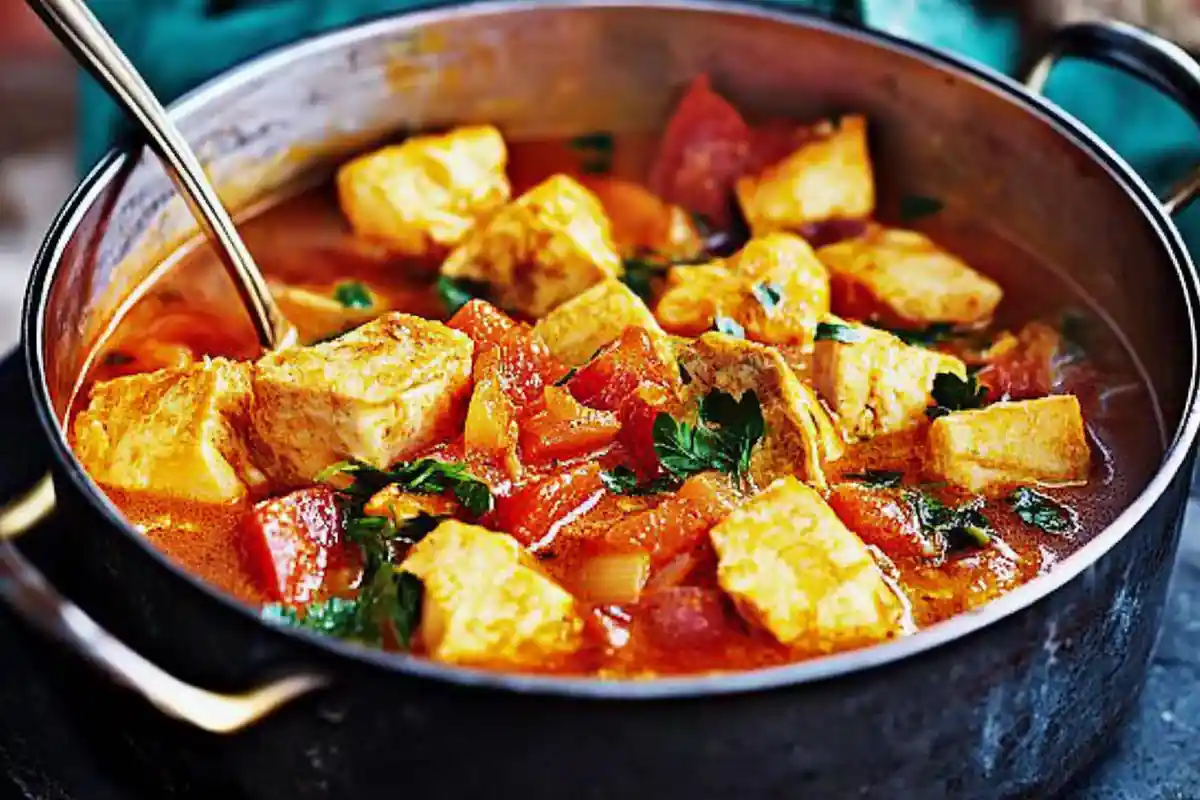Sopa de mariscos, a flavorful seafood soup, holds a special place in many cuisines. It’s a dish that combines the bounty of the sea with aromatic spices. This soup can be both comforting and celebratory, depending on the ingredients and preparation.
The Heart of Sopa de Mariscos
Sopa de mariscos, directly translated as seafood soup, is much more than just a simple broth. It is a culinary experience. The base of most variations includes a rich broth, often tomato-based. This broth simmers with various seafood items, creating a unique taste profile.
The selection of seafood is what makes every version of sopa de mariscos special. In addition, local traditions and availability greatly influence which shellfish, fish and other seafood find their way into the pot.
Regional Variations
Mexican sopa de mariscos often features shrimp, fish, and sometimes octopus or squid. Furthermore, it’s usually flavored with chili peppers and lime. Spanish versions, conversely, might incorporate saffron and a wider variety of shellfish. Coastal regions around the world offer their own unique takes.
In addition, some cooks prefer a clear broth, while others thicken it with rice or potatoes. These small changes create drastically different flavors and textures. Furthermore, some regions might use specific local herbs to further enhance the unique taste. The beauty lies in this adaptability.
Key Ingredients
The essential ingredients for a fantastic sopa de mariscos usually include a quality seafood stock or broth, fresh seafood, and aromatics. Furthermore, tomatoes, onions, and garlic usually form the flavor base. Many recipes also incorporate a touch of herbs and spices.
Freshness is paramount when selecting seafood. Using a variety of seafood, like fish fillets, shrimp, clams, and mussels, creates a delightful complexity. However, don’t overcook the seafood; it should be tender and not rubbery. Adding the seafood towards the end ensures it retains the best texture and flavor.
The Secret to an Incredible Broth
The broth is the backbone of any good sopa de mariscos. A well-made broth will enhance all other flavors. Using homemade seafood stock is ideal. However, a good quality store-bought option works as well.
To make a flavorful broth, start by sautéing onions, garlic, and tomatoes in olive oil. This step develops the initial flavor base. Furthermore, adding a touch of white wine will provide depth. Simmer the aromatics before adding the seafood stock. Allowing the broth to simmer gently allows all those flavors to blend beautifully.
Enhancing the Flavor
Adding herbs and spices at the right stage will elevate the soup. Fresh herbs, like cilantro or parsley, should be added near the end to preserve their aroma. Spices such as paprika, cumin, or a pinch of cayenne can add warmth. A squeeze of lemon or lime juice just before serving gives a bright, zesty finish.
It’s important not to over-spice the broth; you want to complement the seafood flavors. Taste and adjust seasonings as you go. This allows you to fine-tune the balance of flavors. Moreover, a little salt and pepper can make a big difference.
Tips for Perfect Broth
Simmer the broth for at least 30 minutes to allow the flavors to meld. Skim off any impurities that rise to the surface. A slow simmer is key to a clear and flavorful broth. Additionally, avoid boiling the broth, as this can make it cloudy. You want a clear, inviting base for your seafood.
Furthermore, some cooks add a touch of sofrito, a mixture of sautéed vegetables, to their broth. This provides an extra layer of flavor. The broth should be rich and flavorful, but also light enough to highlight the seafood.
Assembling the Sopa de Mariscos
Once your broth is ready, the next step is to gently add the seafood. Delicate items, like shrimp, should be added towards the end. Heartier shellfish, such as clams and mussels, can be added slightly earlier. Be careful not to overcook any of the seafood.
Cook the seafood just until it’s opaque and firm. Overcooked seafood becomes rubbery and loses its flavor. Adding them at different stages ensures that each type is cooked to perfection.
Adding Vegetables
Some variations include vegetables like potatoes, carrots, or bell peppers. Adding them at the right stage is crucial. These items should be cooked until tender but not mushy. Adding vegetables adds substance to the soup.
Moreover, vegetables should complement the seafood and not overwhelm it. Balance is the key to an exceptional dish. Consider the texture of each vegetable and how it will contribute to the overall dish.
Final Touches
Once the seafood and vegetables are cooked, it’s time to add any final touches. Fresh herbs, a squeeze of citrus, and a drizzle of olive oil add brightness and freshness. Taste one last time and adjust seasonings if needed.
Serving the sopa de mariscos hot is key. Serve it with a side of crusty bread or a slice of lime. Garnishing with fresh cilantro adds a pop of color. Furthermore, a dollop of sour cream can add richness.
Sopa de Mariscos Around the World
The beauty of sopa de mariscos lies in its adaptability. The core principles remain the same. However, ingredients and regional preferences change the recipe. Every corner of the world has its unique take on this dish.
Exploring these regional variations offers a global culinary adventure. Discovering new flavors and ingredients can be incredibly exciting. Each variation reflects local culture and culinary traditions.
Regional Adaptations
Mexican versions often include ingredients like chipotle peppers. The heat adds depth and complexity to the dish. Furthermore, the use of lime juice and cilantro is prevalent. Spanish versions often feature saffron and a variety of shellfish. They might also include a touch of smoked paprika.
In addition, Caribbean versions often include coconut milk. This gives it a creamy richness. African takes can sometimes use spices like harissa or ginger. Coastal areas in Europe use local fish and shellfish. Discovering these differences showcases the adaptability of sopa de mariscos.
Cultural Significance
Sopa de mariscos is not just food; it’s a part of many cultures. It’s often served during celebrations and family gatherings. It also makes an everyday comforting meal. Sharing a bowl of this soup connects people.
The soup is a way to experience the flavors of the ocean. It’s a celebration of seafood. The variations demonstrate the diversity and ingenuity of cooks across the globe. Furthermore, it represents a region’s connection to the sea.
Amazing Sopa de Mariscos: The Secret to a Perfect Bowl
Making the perfect sopa de mariscos is about more than just following a recipe. It’s about understanding the ingredients. It’s about balancing flavors and textures. This dish celebrates the bounty of the sea.
With a bit of practice and attention to detail, you can create an amazing sopa de mariscos. Always start with the best quality ingredients. Allow the flavors to develop slowly. Don’t rush the cooking process.
Essential Tips for Success
Use fresh, high-quality seafood for the best taste. Don’t overcook the seafood. Taste and adjust your seasoning throughout the process. Use fresh herbs and a touch of acid to finish the dish.
Furthermore, using homemade seafood stock will make a difference. Don’t be afraid to experiment with new flavors and variations. Enjoy the process of cooking. Serving the soup hot and garnished perfectly elevates the experience.
Variations for Different Tastes
For a richer flavor, consider adding a touch of cream or coconut milk. If you prefer a spicier soup, add more chili peppers or cayenne. Furthermore, you can adjust the type of seafood according to your preference. The soup is versatile and easy to personalize.
Some people enjoy adding rice, potatoes, or pasta to the soup. This provides extra body to the meal. The possibilities are truly endless. The key is to find the balance of flavors and textures that you love.
Image Placeholder: A steaming bowl of sopa de mariscos with various seafood items and herbs, alt text: “A delicious bowl of homemade sopa de mariscos.”
Image Placeholder: A close-up of the ingredients including fresh shrimp, mussels, clams, and herbs, alt text: “Fresh seafood for sopa de mariscos.”
Image Placeholder: A step-by-step preparation scene with sautéing vegetables in a pot, alt text: “Starting the sopa de mariscos broth with aromatics.”
Image Placeholder: Several colorful bowls of different regional variations of sopa de mariscos, alt text: “Global variations of sopa de mariscos.”
FAQ
What is Mexican mariscos?
Mexican mariscos refers to a wide variety of seafood dishes that are popular in Mexico. These dishes often feature fresh seafood, vibrant spices, and citrus flavors. Sopa de mariscos is a popular example, showcasing the rich seafood traditions of the region.
How many calories are in sopa de mariscos?
The calorie count in sopa de mariscos varies based on the ingredients and serving size. However, a typical bowl usually contains around 250 to 400 calories. Using lean protein and a broth-based soup helps keep the calories in check. Be sure to check the nutritional information when dining out or using a specific recipe.
What is creme de marisco in English?
“Creme de marisco” translates to “seafood cream” or “seafood bisque” in English. This dish is a rich, creamy soup often made with pureed seafood and vegetables. It has a smoother texture than traditional sopa de mariscos and a more decadent flavor profile.
How do you say sopa de mariscos?
“Sopa de mariscos” is pronounced as “soh-pah deh mah-rees-kohs” in Spanish. The emphasis is on the second syllable of both “sopa” and “mariscos.” It directly translates to “seafood soup.”

